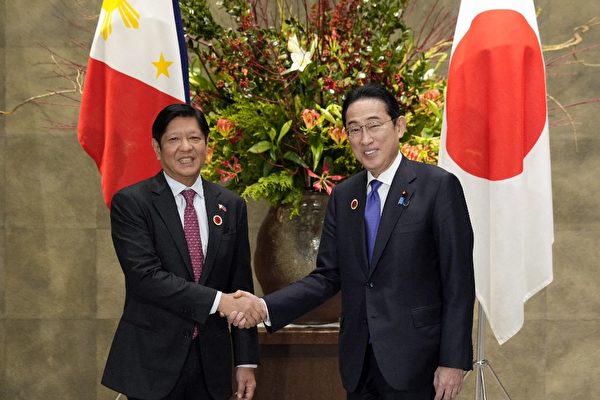Japan and the Philippines are set to sign a crucial defense agreement on Monday, July 8th, allowing military forces from both countries to visit each other’s territories. Under this agreement, the Japan Self-Defense Forces will be able to conduct joint military exercises, including live-fire drills, in the Southeast Asian nation.
Currently, Japanese Foreign Minister Yoko Kawakami and Defense Minister Minoru Kihara are in the Philippines for the second Japan-Philippines “2+2” ministerial meeting, aimed at deepening the bilateral relationship.
During the visit, Filipino Defense Minister Gilberto Teodoro and Japanese Foreign Minister Yoko Kawakami signed the Reciprocal Access Agreement (RAA) in Manila, with Filipino President Ferdinand Marcos Jr. witnessing the signing of the agreement.
This signifies a proactive effort by Japan and the Philippines to enhance their cooperation in the security realm in response to the continuous expansion of China in the East China Sea and South China Sea. Officials from both countries have stated that the agreement will come into effect after approval from their respective legislative bodies.
The RAA signed with the Philippines marks Japan’s first such agreement in Asia. Japan had previously signed similar agreements with Australia in 2022 and with the UK last year.
In order to address threats from authoritarian nations like China and North Korea, the Japanese government is incrementally bolstering its military capabilities, including the ability to counterattack enemy bases. It is anticipated that by 2027, Japan will increase its defense spending to 2% of its GDP, making it the world’s third-largest military spender after the US and China.
Many of Japan’s Asian neighbors, including the Philippines, suffered from Japan’s aggression during World War II. Nevertheless, Japan and the Philippines have steadily deepened their defense and security relations.
The territorial dispute between Japan and China over the Senkaku Islands in the East China Sea has been longstanding. Japan’s objective to strengthen its defense capabilities aligns with the efforts to establish a security alliance with the Philippines and safeguard sovereignty in the South China Sea.
The South China Sea is a critical maritime route for global trade. China has asserted sovereignty over almost the entire South China Sea, while the Philippines, Vietnam, Malaysia, Brunei, and Taiwan also claim parts of the territory.
The most recent serious confrontation between China and the Philippines in the South China Sea occurred on June 17th. At that time, Chinese Coast Guard personnel armed with knives and axes boarded a rubber boat, repeatedly ramming a Philippine Navy supply ship. A standoff ensued at the disputed Ren’ai Reef, with several Filipino sailors sustaining injuries. The Chinese Coast Guard confiscated 7 rifles and other equipment from the Philippine Navy.
The Philippines strongly protested China’s actions and demanded compensation amounting to 60 million pesos (around 1 million USD) along with the return of the rifles. China, on the other hand, accused the Philippines of instigating violence and claimed that Filipino sailors had intruded into Chinese territorial waters disregarding warnings.
The United States and Japan expressed shock at China’s actions and urged the Chinese authorities to comply with international law.
The US reiterated its commitment to defend the Philippines, its oldest ally in Asia, stating that it has an obligation to protect the Philippines if its military forces, ships, or aircraft come under armed attack, including in the South China Sea.
In response to the threat posed by China, the US has been enhancing its military alliances in the Indo-Pacific region. Japan and the Philippines are treaty allies of the United States. In April of this year, the three countries held a trilateral summit at the White House where President Biden reaffirmed the US commitment to defend Japan and the Philippines.

